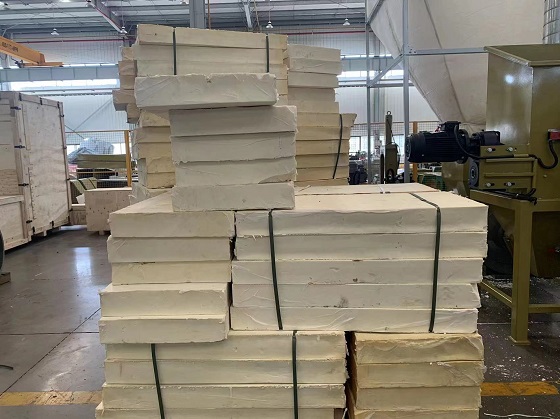PUR Recycling | How to Recycle Polyurethane Foam | GREENMAX
PUR is an abbreviation of Polyurethane. PUR comes in a rigid or versatile form. The rigid PUR foam is reliable as an insulation material for walls and panels in commercial buildings. It is utilized in insulated windows, cold stores, air obstacle sealers, domestic appliances, and other industrial items. The versatile PUR foam is found in mattresses, furniture, autos, sofa padding, and a selection of customer and commercial items.

How to recycle PUR foam?
One essential question in today's global environment with the ever-increasing focus on a circular plastic economy is this: 'Is polyurethane foam recyclable?'
Typically, PUR foam ends up in land fills, yet it is possible to reuse the PUR foam. It can be done by reusing and reprocessing material in brand-new products via chemical or mechanical recycling. The PUR foam can be utilized for energy recovery, as it is a raw material that can be utilized as a replacement for virgin nonrenewable fuel source.
Chemical recycling of PUR foam is when PUR foam is broken down or dissolved in a chemical mix like caustic solvents. After liquifying the PUR foam and refining the chemical mix, it is possible to get a purified polyether.
Mechanical recycling of PUR foam is when the compressed foam is heated up and made into brand-new pellets that can produce brand-new products.
Energy recovery of used PUR is the last resource if recycling PUR is no more possible. After that, the compressed foam can be sent to incineration to produce heating and/or electrical energy.

Step-by-step: Using GREENMAX PUR foam recycling machine
When going over recycling polyurethane foam, a significant issue is the logistics involved in the process. PUR foam, like all foams, has a great portion of air, which makes it hard to deal with, sort, store, and transport. This is why compaction is vital when processing PUR foams. Furthermore, PUR foam also contains an explosive gas that can produce dangers when this plastic foam is handled.
Step 1: Collect the waste
First, the material needs to be collected and sorted to guarantee that all of the foam is PUR which there are no nails/tape/wood items accumulated together with the PUR foam.
You can collect PUR foam in a factory where off-cuts or faulty products can use up rather a great deal of space. In this instance, it would certainly make good sense to gather as much PUR foam as possible and start compacting as quickly as the material has been collected. It is always recommended to compact as close to the source as possible to save the cost of manual labor, handling, and transport.
Another place you can collect used PUR foam is a recycling station. Exclusive individuals and companies can drop off their used PUR foam for recycling. It is equally advisable to compact your collected PUR as close to your source as possible, preferably next to the collection point. This is because it is very costly to transport the foam with air and gas inside.

Step 2: Compaction in the GREENMAX Hydraulic Compactor
When collect the PUR foam, the suggestion is to put a GREENMAX Hydraulic Compactor right next to the collection point. Depending on the quantity of material to be collected in each place, a hydraulic compactor is created for the compaction of the PUR foam.
When the foam is fed into the pre-crusher, it is shredded right into smaller pieces. The PUR hydraulic compactor has a great deal of easy-handling functions, such as an automated start/stop function, control box, and alarm systems to indicate if something requires adjusting. The procedure itself is constant, and as long as there is material in the machine, everything maintains functioning immediately up until there is no foam left to compact.
The compacting assures easy handling and makes the material take up a lot less space. After compaction, the PUR foam can be sold for further recycling. This option for recycling PUR foam is eco-friendly as it uses extremely little electrical power and helps this material stay valuable and all set for the next step in its life cycle. In general, it is an extra sustainable choice to the landfill or incineration alternatives.
Step 3: Pack and ship the compacted PUR foam for further recycling
When the compressed PUR foam is collected, these blocks are heavy and quickly stackable on a pallet to make sure the optimum weight is achieved in the transporting truck. From both an economic and environmental point of view, it is much better to fill out the truck and use the maximum permitted weight than it is to transport foam, air, and a half-empty truck.
Take full control of PUR recycling with GREENMAX
What does the GREENMAX HC300 Hydraulic Compactor for PUR foam offer?
Manages as much as 300 kg/hour (6 tons/day).
Customized design Upon your factory needs.
Achieves approximately 350 kg/m3 after compaction.
High safety levels.
Is CE-approved.
